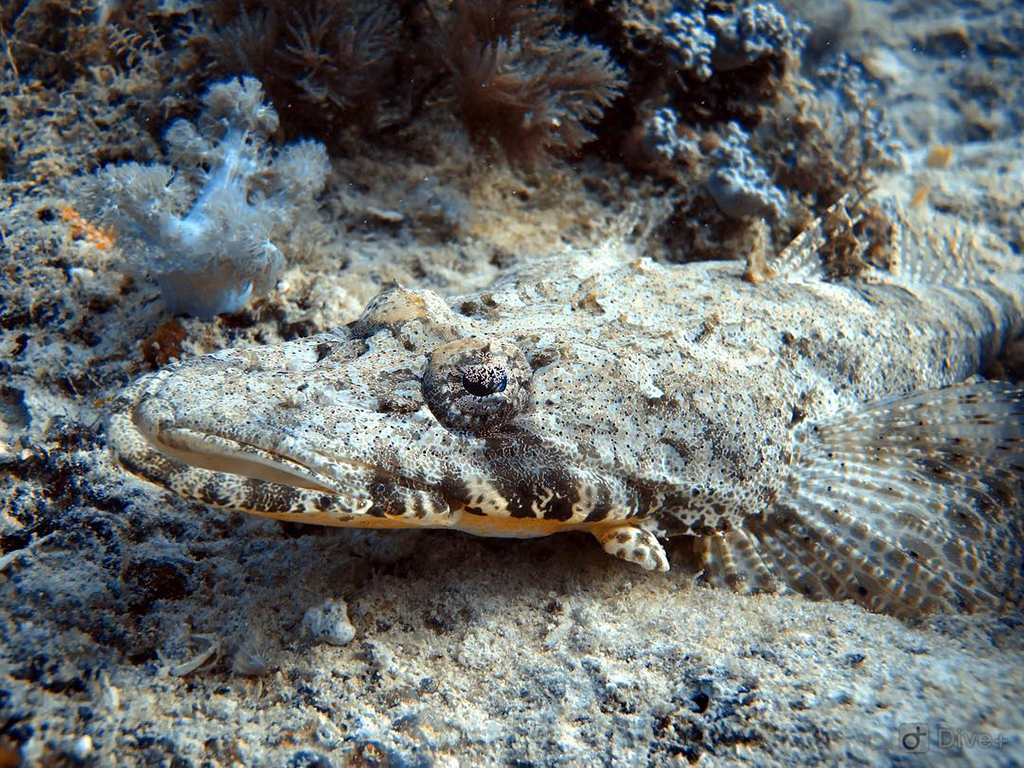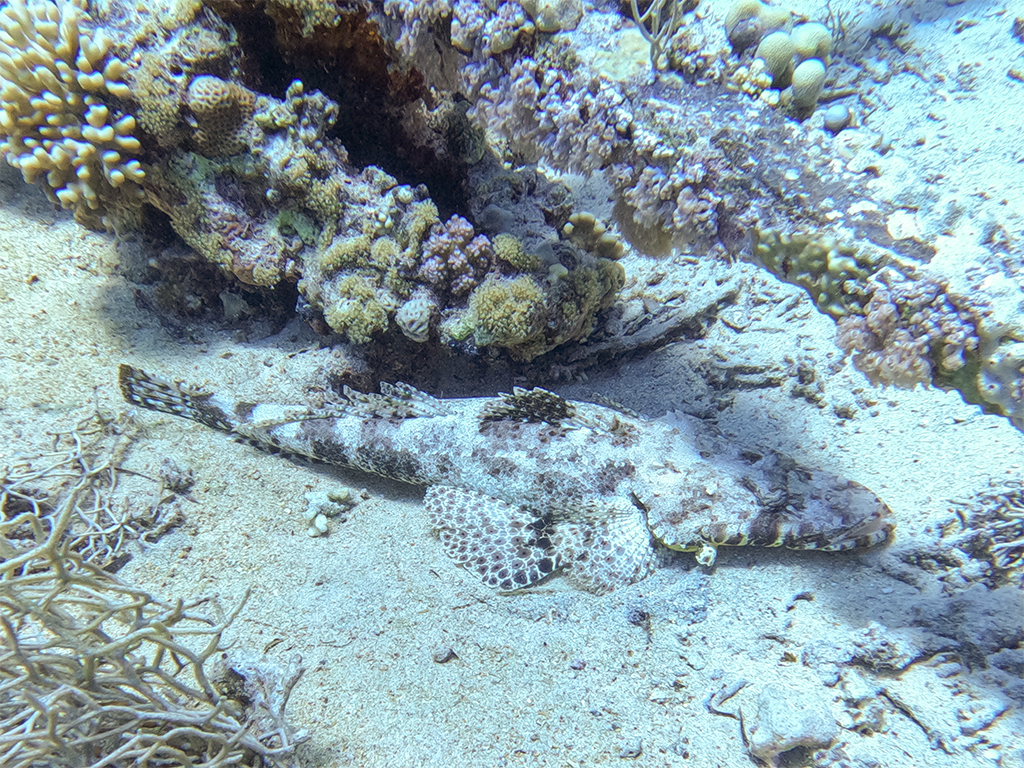Crocodile Fish
These snappy creatures won’t actually bite. In fact most of them appear to be lazy! They camouflage into the sea floor because of their sand rock look. The body is elongated and the head is particular because of its flat appearance like a duck bill. The eyes of the Crocodilefish have iris lappets. These projections help break up the black pupil of the fish, and thus improve its camouflage.
The pectoral fins are spread to the side when it is sitting on the bottom and are also camouflaged. They have a large pair of eyes which are camouflaged by small tentacles that drop down over the eye from the upper lid, making them extremely difficult to spot. As the name implies they have a protruding jaw which resembles that of a crocodile and a row of fierce looking teeth allowing them to clamp onto their prey. They have a long body widening at the center and tapering off to the tail and grow up to 70 centimeters. When sitting normally on the bottom their dorsal fin is down but if approached by a diver they will often raise the dorsal fin as a warning, as if to say here I am and you have spotted me but I saw you first.
They got their name because of the long jaw they have. That long jaw does benefit the crocodile fish when it comes to hunting. Crocodilefish eat almost anything that will fit into their mouths. They eat smaller fish and crustaceans like crabs. Being ambush predators they sit and wait for their prey to come to them, always watching through their tentacled eyes. They wait for the prey to come and with one snap of their crocodile jaws they will grab and swallow them.
They grow up to sizes between 70cm and 1m long. Although not as big as a crocodile, they’re pretty big in general. This species is usually seen on sandy or rocky bottoms near seagrass or corals at depths ranging from 1 m to at least 30 m.
These fish are extremely well camouflaged with the mottled pattern breaking up their outline and with the small tentacles on their eyes helping to break up the outline of the eye, the only spot that cannot be easily camouflaged. When they settle into a spot on sand they lightly flap their pectoral fins which lifts some sediment and drops it down on them, breaking up their outline even further
- Crocodile fishes’ eggs are poisonous.
- Crocodile fish are greenish-brownish, with green, grey and brown splotches which change color to help camouflage.
- To assist their camouflage they have tentacles on their eyes, which help to break up the outline of the eye, making it much harder for their prey and a diver to spot them.





